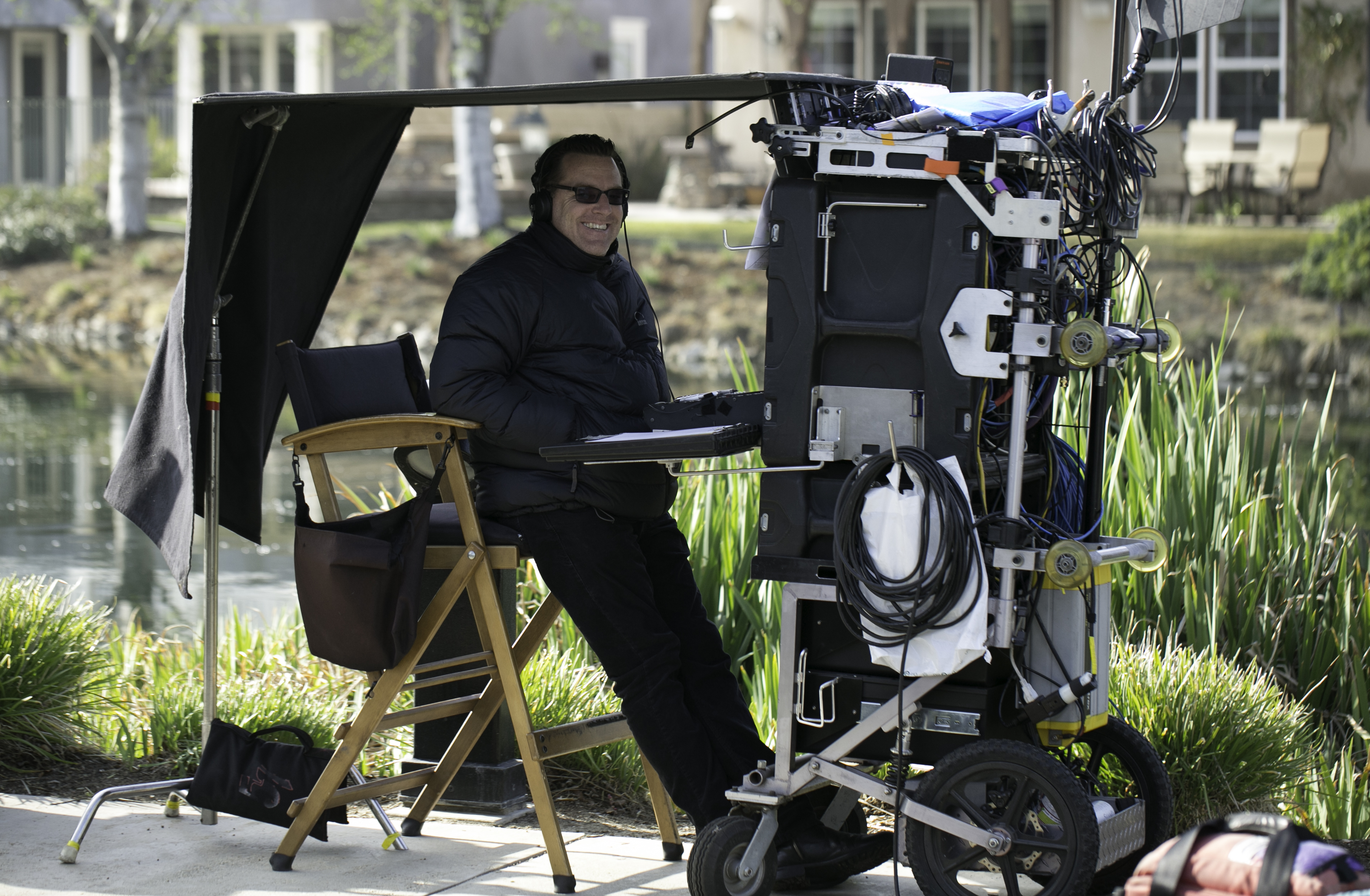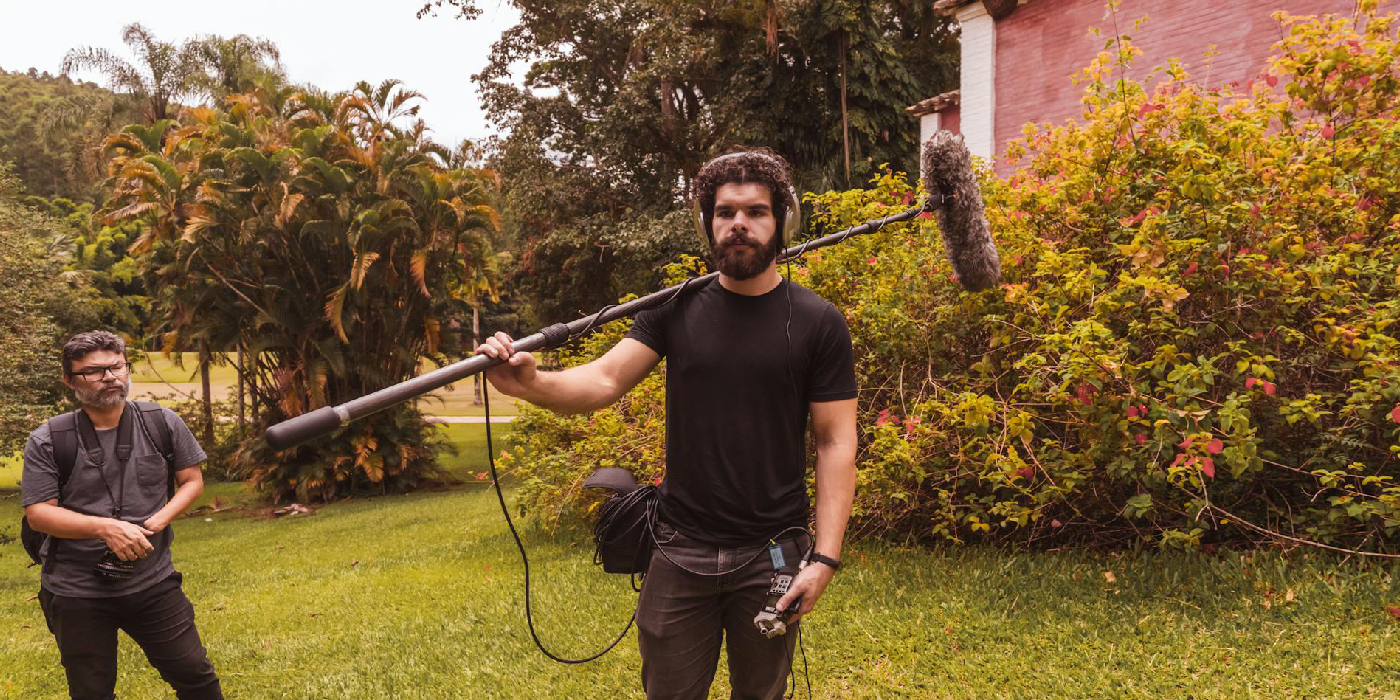What Does a Production Sound Mixer Do?
The Production Sound Mixer (also called Location Sound Mixer) is the audio department head on film and television sets. They are responsible for capturing high-quality live sound during filming, managing the entire audio crew, and ensuring that every line of dialogue and ambient sound serves the story's emotional truth.
Key Responsibilities:
- Recording clean dialogue and environmental sounds
- Managing wireless microphone systems
- Monitoring sound levels and audio quality
- Directing boom operators and sound assistants
- Collaborating with directors and camera teams

Professional sound mixer managing multiple audio channels on set
Professional Sound Equipment and Setup

Sound Cart Setup
Mobile command center housing mixing console, recorders, wireless receivers, and monitoring equipment.

Mixing Console
Digital mixing board for real-time audio control, level management, and signal routing.

Boom Operation
Skilled boom operators work closely with mixers to capture pristine dialogue while staying out of frame.
On-Set Hierarchy and Collaboration
Key Collaborative Relationships:
With Director:
- • Understanding creative vision for sound
- • Discussing scene-specific audio needs
- • Problem-solving audio challenges
With Camera Department:
- • Coordinating microphone placement
- • Managing boom shadows and reflections
- • Timing equipment moves with camera
Professional Insights and Tutorials
On-Set Audio Masterclass
Complete guide to professional sound mixing techniques and equipment setup.
14:39 • 139K viewsWhat Sound Mixers Really Do
Behind-the-scenes look at the daily responsibilities of a production sound mixer.
3:29 • 43K viewsDay in the Life
Real production sound mixer shares experiences from documentaries to feature films.
12:30 • 5.4K viewsCommon On-Set Sound Challenges
Environmental Challenges
Requires specialized windscreens, weather protection, and backup plans.
Traffic, air conditioning, crowds require careful timing and positioning.
Reverb in large spaces, echoes, and poor room acoustics.
Technical Solutions
Boom mics, lavs, and plant mics for comprehensive coverage.
Frequency coordination and interference monitoring.
Constant audio quality assessment and immediate problem resolution.
Student Practice Exercise
Scene Analysis: Planning Your Sound Setup
Scenario: Interior Dialogue Scene
Scene: Two actors having an emotional conversation in a small apartment kitchen. One character is cooking while the other enters upset. The scene requires intimate dialogue capture with natural kitchen ambience.
Challenges: Small space, cooking sounds, emotional performance, actor movement
Equipment Planning Checklist
Problem-Solving Exercise
Refrigerator hum is interfering with dialogue
Actor keeps rustling costume during emotional moments
Always record room tone (ambient sound) for at least 30 seconds after each scene. This "silence" is essential for post-production editing and creating seamless audio transitions.
Best Resources for Beginner Sound Mixers
Essential Reading
- • "Sound and Music for Theatre" by Deena Kaye
- • "Location Audio Simplified" by Dean Miles
- • "The Sound Effects Bible" by Ric Viers
- • Professional audio magazines and websites
Professional Organizations
- • Cinema Audio Society (CAS)
- • Audio Engineering Society (AES)
- • Local film industry groups
- • Sound department networking events
Getting Started
- • Volunteer on student films as boom operator
- • Practice with basic recording equipment
- • Shadow experienced sound professionals
- • Study films with exceptional sound design
Ready to Start Your Sound Journey?
The Production Sound Mixer role combines technical expertise with creative storytelling. Every great film depends on professionals who understand that sound is not just heard—it's felt. Start developing your ear for the emotional language of audio, and you'll discover how sound shapes the very soul of cinema.